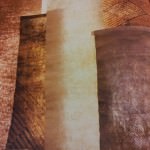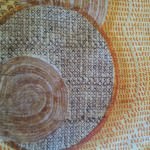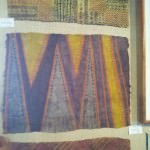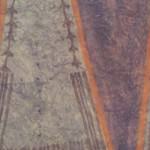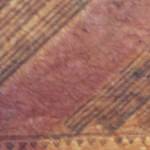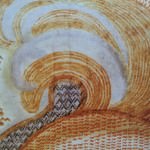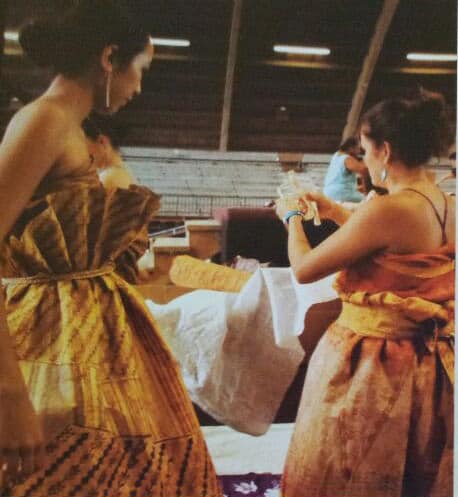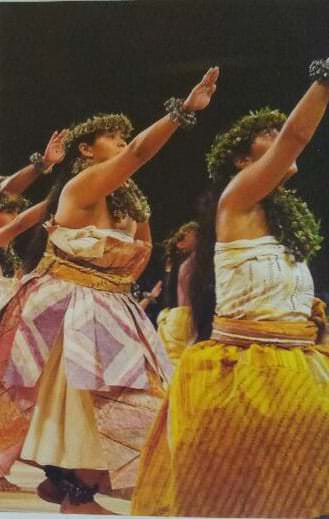I literally just stepped off the plane from one of the most beautiful places on Earth: Hawai’i. Despite the need to be out from behind a desk, close to the lullaby of the ocean waves, still I couldn’t resist delving further into some traditional culture of the islands. Little did I know this curiosity would lead to a quest on finding a local kapa artist and a lesson in ukulele.
Practically upon landing on Big Island, I immediately discovered an article in the Where series (wheretraveler.com) by Lynn Cook called The Kapa Chronicles, which included not only some kapa history, but also a written review and images of kapa maker Marie McDonald’s pieces as fine art, her recent exhibit at the Honolulu Academy of Arts. I decided I had to meet this woman, and I set out to find her or at least more information on her work. How delighted I was to learn she resided in Waimea, only 12 miles from where I was staying! This was my only but unbelievable chance to meet the kapa maker herself. Before I embarked on my search for Ms. McDonald, however, I had a few things to learn during my visit.
Performing arts and fiber arts? Always a connection!
First, a brief lesson in ukulele, (click link twice to see video) where I “fell in love” with my young teachers Melissa, Lauren, Ryan and Eric; true, young geniuses at dance and all the traditional performing arts. Then, a mini lesson in hula, but I noticed there were no signs of anyone wearing kapa; the bark cloth worn for hula in the past. The art of kapa was almost lost in 1820 when the missionaries who came to Hawai’i introduced woven cloth and sewing circles.
Patterns printed on kapa are made with carved wooden sticks or anvils and natural dyes.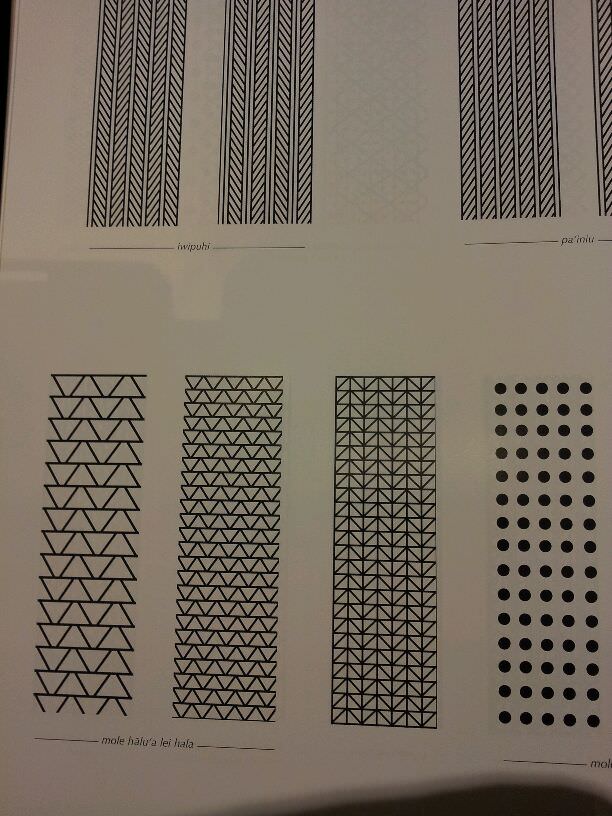 Geometric Patterns examples for kapa (bark cloth).
Geometric Patterns examples for kapa (bark cloth).
Kapa, generically known as tapa in Polynesian, is a cloth made out of bast fibers from bushes.
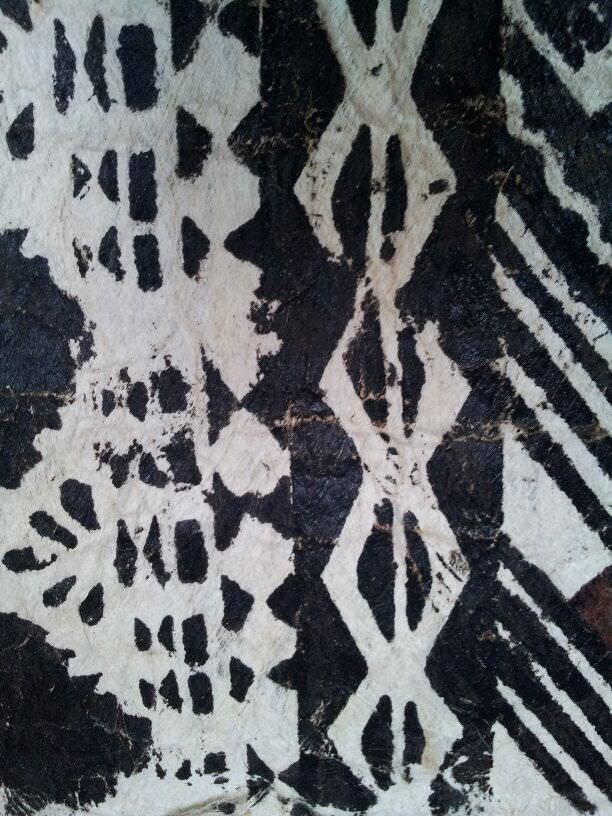
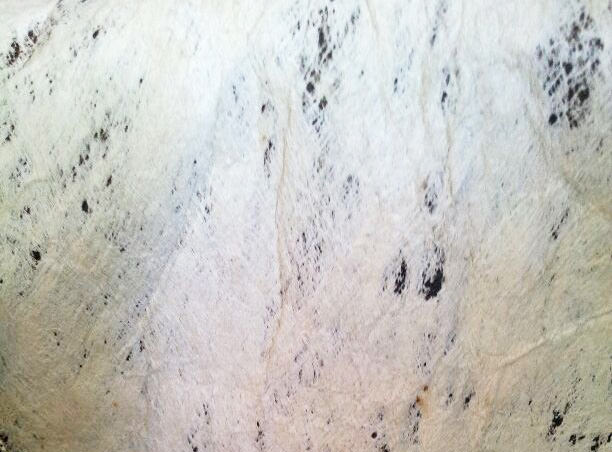
Used traditionally as loincloths and other garments, the kapa was handmade by women. Did you know, however, that kapa is made out of kōzo; fiber from the paper mulberry bush? Called wauke in Hawai’ian, parallel to the kōzo fiber used in Japan for washi, wauke is cultivated to make kapa cloth traditionally used for hula. These days, artists create modern patterns on their own, homegrown, homemade kapa cloth. It is interesting to note that the paper mulberry’s bast fibers make their appearance in various, functional fiber arts found across the globe.
My quest to meet Marie, the kapa artist:
I drove to Waimea and inquired at the local Gallery of Great Things, which carried both Marie’s kapa work as well as her daughter’s. “How could I meet the great Marie McDonald?” I was informed at least her daughter Roen would be at the Farmer’s Market on Saturday selling kapa. Saturday, I again made my way to Waimea Town to the Farmer’s Market. Unfortunately, I did not catch up with either mother or daughter, but I was so close!
These photos of mother and daughter were taken in 2010, by www.damontucker.com in 2010.
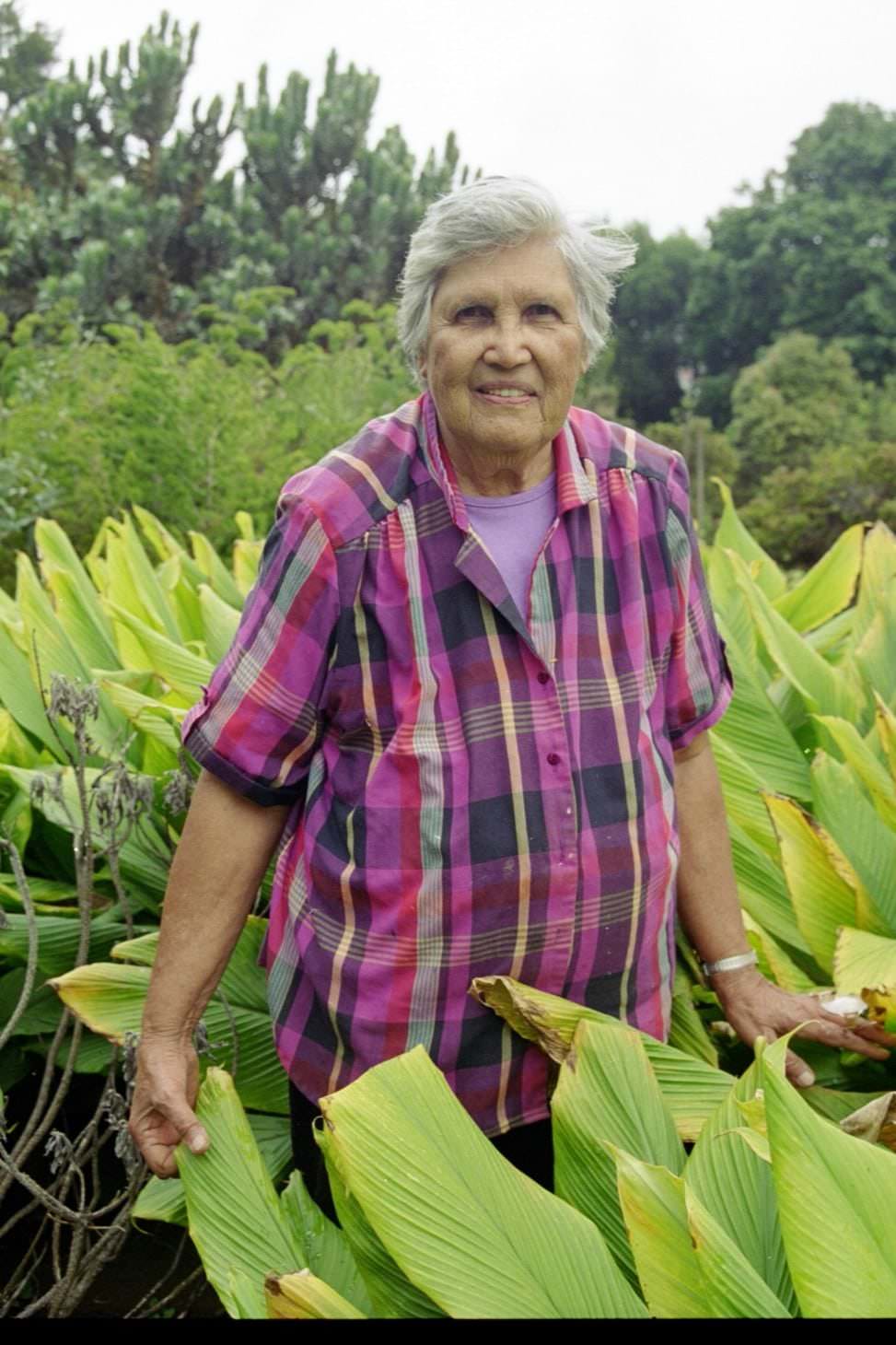
Marie McDonald, who is 87 years young this year, is a native Hawai’ian who intends to pass on her wealth of knowledge on traditional arts to future generations, along with her daughter, Roen McDonald Hufford. These are very special farmers, as they grow their own “art materials” to create their art. They have long been living sustainably before the word became fashionable.
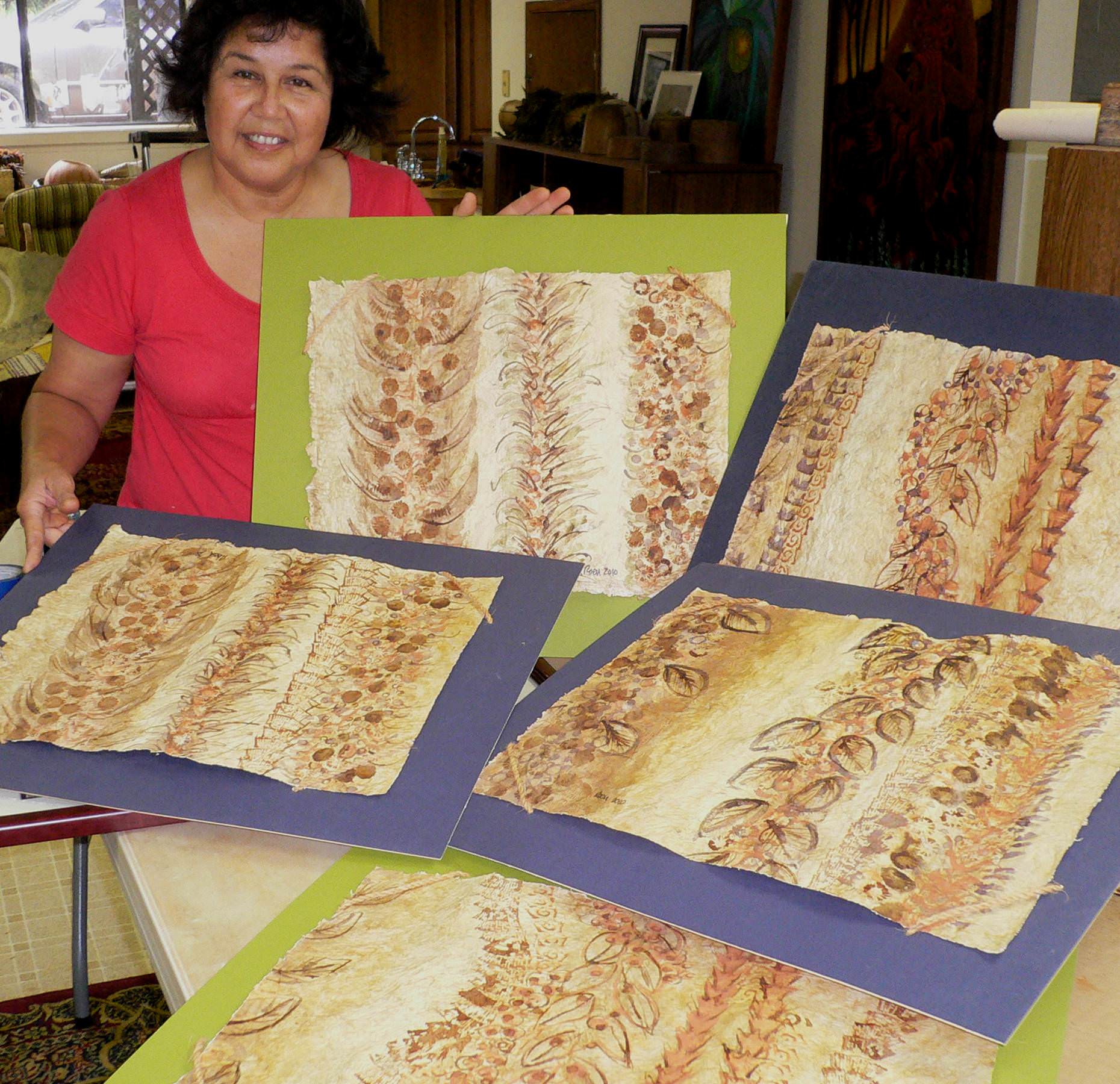
Marie has taught traditional Hawai’ian culture for decades in schools. She is a scholar in this realm and a true kumu (teacher) of her culture. She is author of an important book on lei-making called, Ka Lei:The Leis of Hawaii (1985) , and a newer book on leis, with astounding photography called Na Lei Makamae: The Treasured Lei (2003). I have now learned that mother and daughter teach traditional Hawai’an arts via the Hawai’i Prep Academy, where I must visit next time for sure!
Here are some leis I saw at the farmer’s market in Waimea.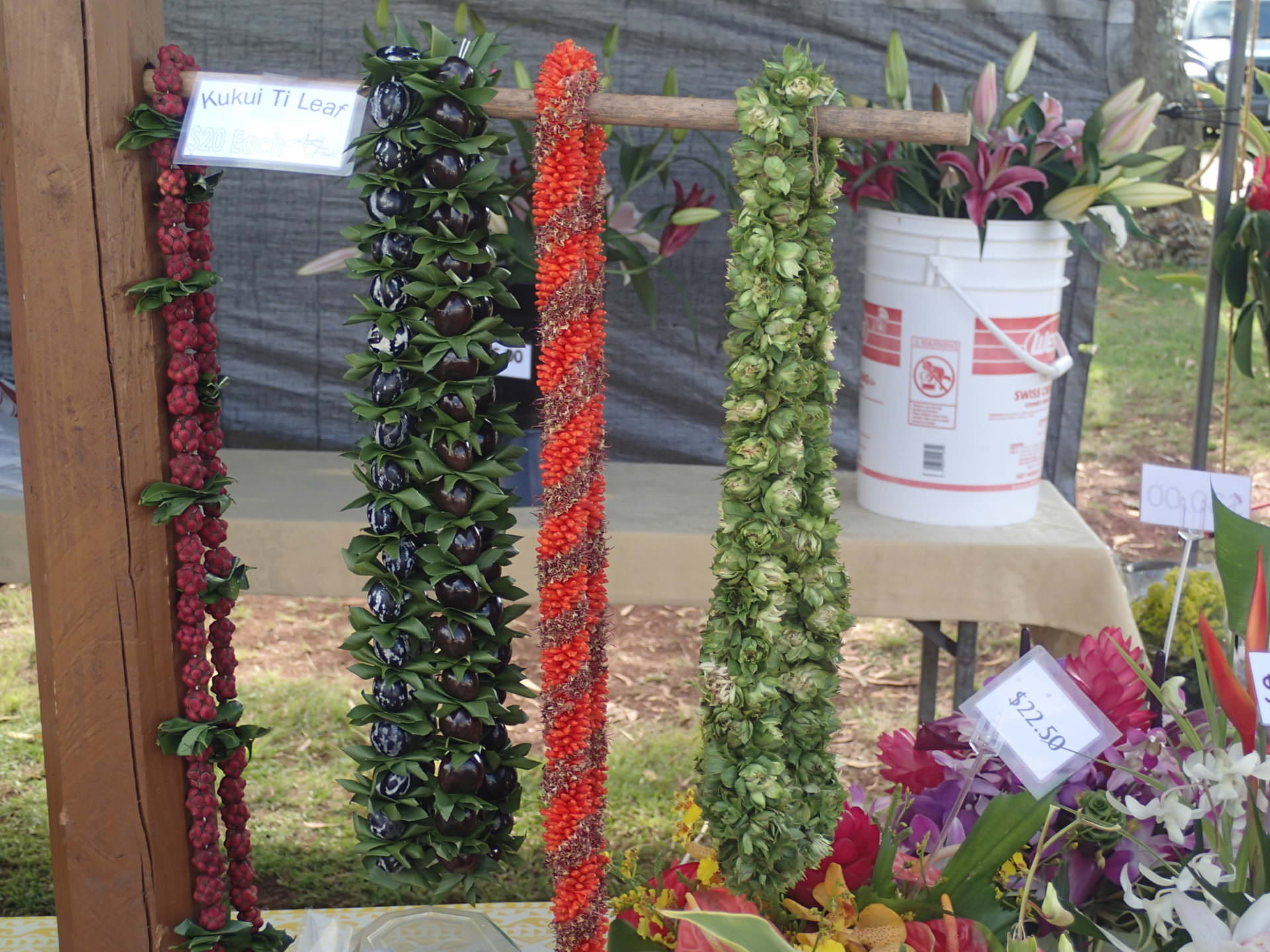
Here are examples of Marie McDonald’s kapa work:
Dancers wear kapa as they perform; scenes from the Merrie Monarch Festival from Lynn Cook’s article.
The Big Island Beckons: The kōzo, kapa and HULA connection is calling me back to the Big Island. Hopefully it will be very soon, so I may have the honor of meeting Marie McDonald, her daughter, and their many students. There is much to discuss, learn, and share, but in the meantime, here is my offering of what a little curiosity on vacation can do for you.

